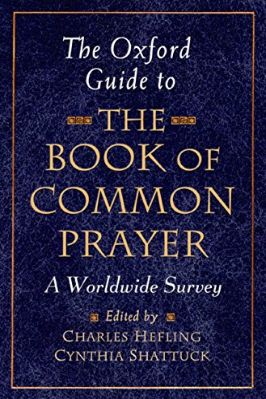
| Book Title | The Oxford Guide To The Book Of Common Prayer |
| Book Author | |
| Total Pages | 631 |
| Book Views | |
| Language | English |
| Book Download | PDF Direct Download Link |
| Get Hardcover | Click for Hard Similar Copy from Amazon |
The Oxford Guide to The Book of Common Prayer A Worldwide Survey – Charles Hefling – Cynthia Shattuck,
THE OXFORD GUIDE TO THE BOOK OF COMMON PRAYER
Daily Prayer
Daily prayer has never been the exclusive property of any liturgical tradition, however fixed or flexible. Christians have prayed on their own, and with others, whether at home or in church.
But by the end of the Middle Ages, three particular ways had developed of worship¬ ping at set points in the day.
They have their origin in the early monastic tradition, particularly the Rule of St Benedict, from the sixth century.
The first is to all intents and purposes how religious communities put the Rule into practice.
The second is how the scheme was adapted for more flexible use by local clergy and friars, whose way of life made it very difficult to pray the seven daily offices on their own, and impossible in the company of others.
The third is about how certain specific, simple forms of prayer were used by literate lay folk, first of all in Latin, and then, on the eve of the Reformation, in English.
In some respects, this parallels what we have noted about the Mass; a standard earlier elaborate form is reduced into a single, flexible book, the Missal, and this is supplemented by material for the laity. What of this monastic tradition?
Of all the religious orders, the Benedictines were prob¬ ably the most influential in England.
Unlike on the Continent, the majority of English cathedrals were Benedictine, though one or two, such as Salisbury, were staffed by secular canons.
Nonetheless, the worship in these great churches and the abbeys dotted around the countryside, whether grand buildings like Tewksbury or smaller places like Titchfield, was elaborate.
The seven daily offices were offered in a way that echoed the spirit of the Rule of St Benedict, with Lauds (‘Praises’) and Vespers (‘Evening’) as the main services, between which were Terce,
Sext, and None (‘Third’, ‘Sixth’, and ’Ninth’), topped and tailed by Prime (‘First’) and Compline (‘Completion’), and with the longer service of Vigils (‘Watch’) before Lauds. Sometimes this scheme was added to, such as by Vespers of the Dead, or there might be an additional short office of the Blessed Virgin Mary or the Trinity.
But there were always celebrations of the Mass, whether the main High Mass, which usually followed Terce or at other times in the morning.
Every priest celebrated Mass once per day on his own, with a server to assist; and sometimes it would be more frequently if there were an endowment to celebrate on behalf of a dead person.
To read more about the The Oxford Guide To The Book Of Common Prayer book Click the download button below to get it for free
Report broken link
Support this Website
 Don't Miss out any Book Click Join OpenMaktaba Telegram group
Don't Miss out any Book Click Join OpenMaktaba Telegram group